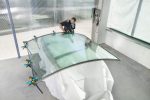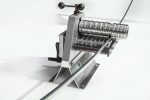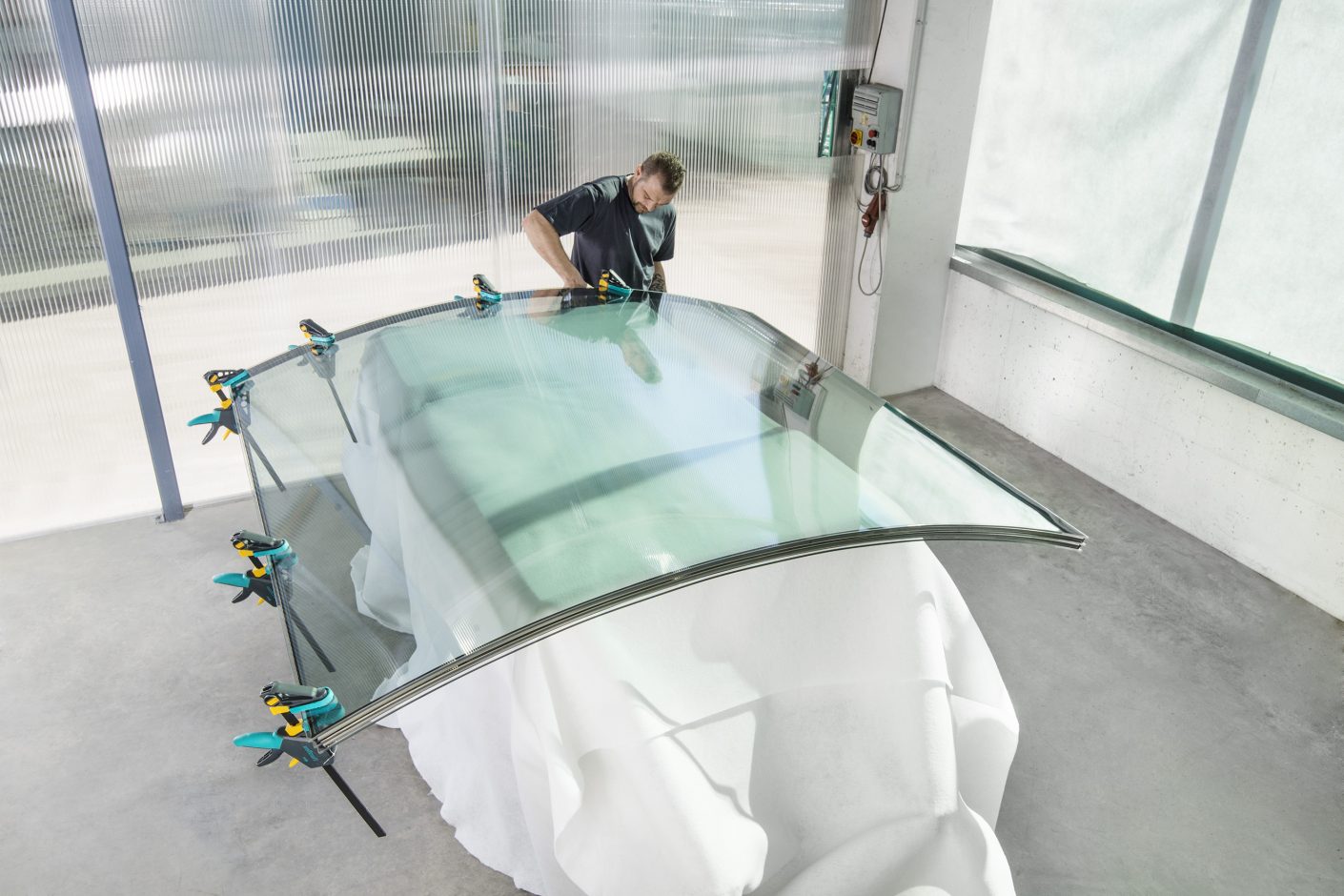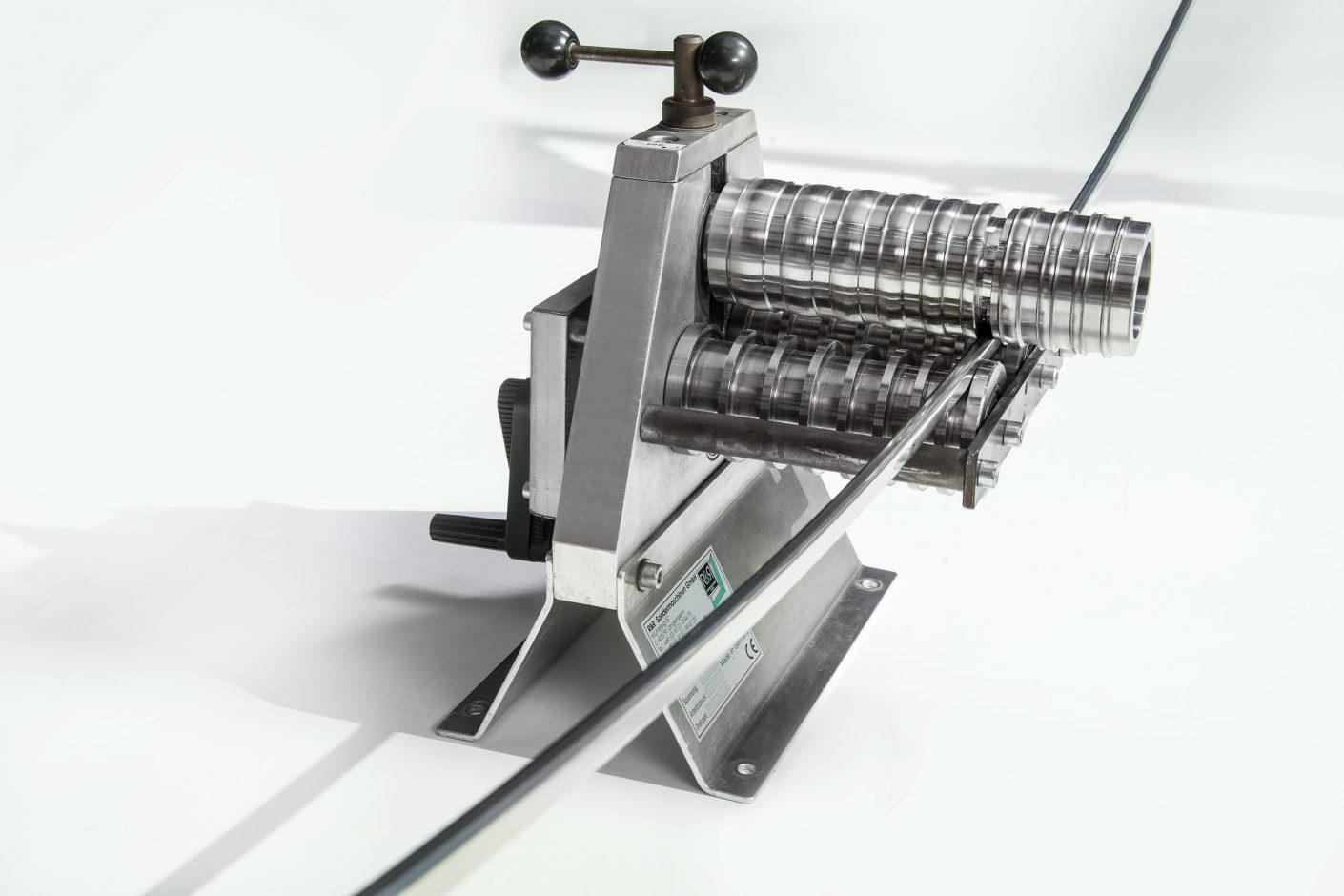“The linear contours which are a distinguishing feature of the building in Seewalchen have been deliberately softened in the entrance area” explains Michael Frey, the CEO of Architects Schmelzle + Partner. “In terms of styling, this has created a curve linking the world of sophisticated high technology and the people whose special expertise in high-performance plastics is used here to develop specially tailored solutions for customers.”
Bending the rules
The curved facade elements were produced by Wenna Glass in Linz. Every pane measuring 2,126 mm in length and between 845 and 1,940 mm in height was precisely curved to the required radius of 2,635 mm using a special hot bending technique. But there was a question mark over the process from the start: How to further process the Thermix brand warm edge spacers specified by the client to fit the triple insulating glass? Although these spacers can be bent when cold to produce frames, they are considered “rigid” as they have been used to date predominantly for flat insulating glass.
Ensinger itself came up with some expert advice. After all, the German sister company has been producing and further developing Thermix since 1994. “We checked this using a simple bending process”, explains application engineering specialist Heinz Raunest. “It’s actually sufficient to use a good manual roll former. With a few minor adjustments the plastic profiles can be precisely adapted to the required radius without any folds. The material with its integrated stabilizing wires stays reliably in shape.”
Simply adjustable
“We were able to then fill the pre-bent profiles in the customary way using adsorbent, apply butyl tape and assemble them to form frames using corner keys”, adds Gregor Wenna, CEO of the curved insulating glass specialist. “We then built up the triple glazed units from the inside out, pressed the elements using clamps, filled them with inert gas and sealed them. It was all amazingly simple, as the glass and spacers had been processed to a high degree of precision.”
The job of the installers from Mglass Objektbau in Steyregg was somewhat more fraught with difficulty: With the aid of a crane, they fitted the ten weighty elements into the supporting structure of the facade and anchored them in place into their frames with plaster strips and rolled aluminium trims. Robert Kaiser, Head of Controlling and authorized signatory at Ensinger Sintimid, is delighted with the new building. After only twelve months of construction, the company was able to move into the building on schedule.
Energy-efficient construction
Overall, Ensinger Sintimid has invested over 5 million € in its Seewalchen location, setting a course for further growth. A workforce of around 40 currently handles and produces semi-finished products, finished parts and compounds made of high-performance plastics, which are used in a wide range of industries the world over, in particular in the aerospace sector, in electronics and semi-conductor production, mechanical engineering and the automotive industry.
“We now have twice as much space available as before. Thanks to the energy-efficient construction method used, we also anticipate a significant reduction in operating costs per square metre”, says Robert Kaiser. “Heat pumps enable surplus heat from production to be used for heating. The facade is highly insulating, with the flat and curved triple ISO elements providing a thermal transmission coefficient of just 0.89 W/m2K. This new building really does have all-round benefits for Ensinger, for the workforce, the customers and also the environment.”
Thermix TX.N plus spacer creates a “warm edge”
Thermix spacers from Ensinger improve the thermal separation of insulated glass windows, doors and facades. This helps save energy and consequently heating and cooling costs as well as cutting carbon emissions. As an insulated glazing edge bond system, Thermix spacers provide a “warm edge”. Condensation formation and the chill sensation caused by cold air downdraughts on the inside of windows are reduced to a minimum.
Thermix spacers comprise the UV-resistant special plastic TECATHERM® PP, which is over 700 times less thermally conductive than aluminium. A 0.1 mm thin stainless steel foil sheet impervious to gas and water vapour on the hollow chamber profile provides a lasting seal of the space between panes, which is usually filled with the inert gas argon to provide optimum insulation.
Its integrated stabilizing wires make Thermix TX.N plus extremely stable, and facilitate handling and further processing. The profiles can be bent cold in any axial direction. This allows spacer frames to be simply produced for straight as well as curved pane profiles, and ensures excellent thermal insulation values as well as outstanding productivity and quality for insulating glass manufacturers.
For more information, go to: www.thermix.de/en



















